Have you ever wondered about the financial implications of LED street lights?
We’ll be digging into the costs associated with street lights revealing a complex picture influenced by various factors, including the type of lights, installation charges, and ongoing maintenance and energy expenses.
Typically, the purchase price of a street light ranges from $60 to $300, but this is just the tip of the iceberg. Installation can add up to $1,000 per pole, with the poles themselves costing between $2,000 and $3,000.
However, the choice between technologies like LED and solar can significantly impact long-term operational costs, making it crucial to consider both upfront and future expenses in any lighting project.
So, if you’re intrigued to know more about the backend cost and how these accumulate together to build a handsome amount, read on.
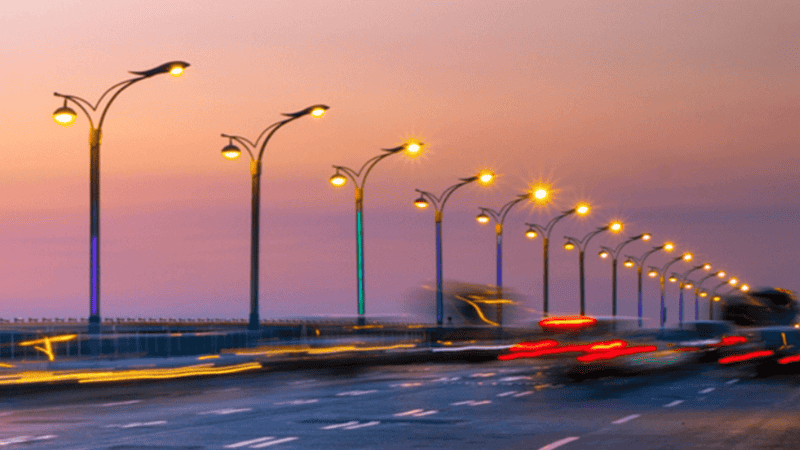
Understanding Street Lights
Street lights, often referred to as street lamps, are crucial components of outdoor lighting infrastructure, designed to illuminate streets, roads, and other pathways to enhance safety, visibility, and the aesthetic appeal of public spaces.
These fixtures are typically mounted on poles and strategically spaced along the sides of roads and pathways to provide widespread illumination during the nighttime.
Since there are many types of streetlights available, each streetlight is different when it comes to technology, brightness, and energy efficiency.
Traditional street lights include incandescent and metal halide lamps, known for their broad spectrum of light but lower energy efficiency compared to modern alternatives.
On the other side, LED street lights are more reliable and a popular option. It is because of their longer working life, less energy usage, lower cost in maintaining, and trend in the lighting industry.
Ask For Free Quote
Let us Respond Promptly for your Needs :)
Types of Street Lights
Street lights reveal a variety of options, each with its own unique benefits and considerations.
High-Intensity Discharge (HID) Lamps
HID lamps have been the backbone of street lighting for decades. They operate by passing an electrical current through a gas-filled tube, creating light. Metal Halide (MH) and High-Pressure Sodium (HPS) lamps are the two primary types of HID street lights.
HID lamps are known for their high light output and color rendering, making them suitable for areas where accurate color perception is important. HPS lamps, on the other hand, are favored for their efficiency and longevity, emitting a warm amber light, which is a common sight in many urban streets.
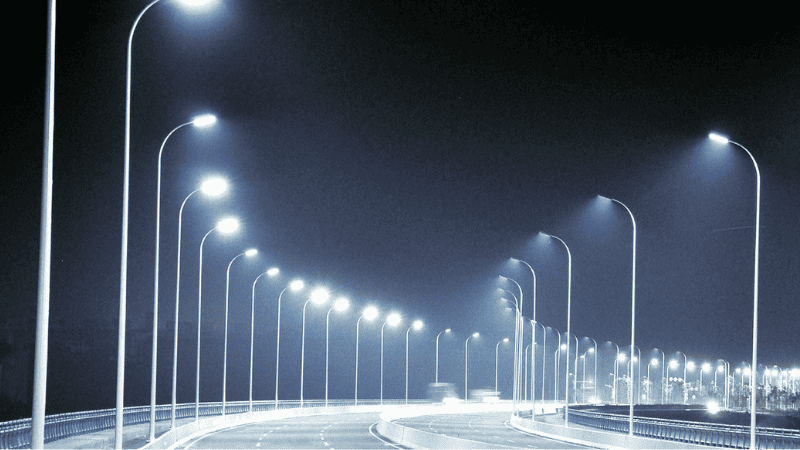
Light Emitting Diode (LED) Lamps
LED streetlights come with multiple perks and reliability in both costs and environmental benefits. They generate light by passing an electrical current through a semiconductor material. It offers more energy savings than HID lamps.
They also allow end users better control over light distribution. Firstly it minimizes light pollution and secondly, it enhances night-time visibility. Their ability to operate effectively in a wide range of temperatures and conditions makes them a versatile choice for various settings.
Solar-Powered Street Lights
Solar streetlights are a trendy and high-tech solution to save energy and cost. It is also a vital option where there is limited access to electricity. It also helps reduce carbon footprint. These lights consist of panels that absorb the sunlight and convert it into electrical energy which is stored in batteries for usage.
They are self-sufficient and are easy to install. They are an ideal option for remote locations, parks, and pathways, offering a sustainable lighting solution without the need for trenching and cabling.

Advantages of USing StreetLights
Streetlights are critical for urban and rural safety. Here are some benefits that are critical for human living.
| Advantage | Description |
|---|---|
| Safety & Security | Reduces crime by 20% and traffic accidents by up to 35%. |
| Energy Efficiency | Saves around 70% energy compared to traditional lights, reducing carbon emissions. |
| Cost-Effectiveness | Smart technology lowers energy costs with adaptive lighting control. |
| Durability | LED lights last up to 25 years, minimizing replacements and maintenance. |
| Eco-Friendly | Free from hazardous substances like mercury, leading to a smaller carbon footprint. |
| Night Visibility | Enhances visibility for safer navigation and improved community safety perception. |
- Safety and Security: Streets can significantly experience criminal activities. The street lights help reduce crime rates by approximately 20%. They also help reduce traffic accidents.
- Energy Efficiency: Opting for LED street lighting can lead to substantial energy savings, cutting down electricity usage and carbon emissions when compared to older lighting technologies.
- Cost-Effectiveness: Smart lighting technology not only enhances street light efficiency but also contributes to noticeable reductions in energy costs. The adaptive control of lighting levels according to real-time needs can further optimize energy usage and lower expenses.
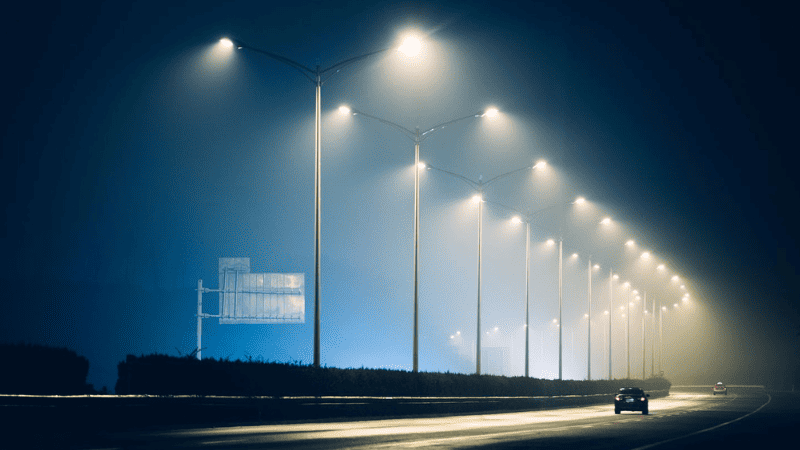
- Durability: LED lights are distinguished by their long service life, often lasting up to 25 years, which significantly reduces the need for frequent replacements and maintenance.
- Eco-Friendly: It’s a universal truth that LED lights are environmentally friendly. It is because they don’t contain hazardous substances like mercury as it is present in traditional lighting bulbs.
- Improved Night Visibility: They offer a better quality of light making navigation safer for drivers and the public. It overall improves the perception of safety in the community.
Ask For Free Quote
Let us Respond Promptly for your Needs :)
How Much Does LED Street Light Costs?
The costs associated with LED street lighting span from initial installation to ongoing operation and eventual replacement, each influencing the overall financial commitment to modernizing street illumination.
Installation Costs
The installation of LED street lights is a significant investment, with expenses ranging between $2,500 and $3,500. This cost spectrum encompasses labor charges, which can vary from $500 to $800, highlighting the financial considerations necessary for undertaking such projects.
The variability in installation costs is influenced by the intended application of the LED lights, whether they are destined for bustling expressways, secure underground parking facilities, or tranquil residential areas.
Replacement Costs
Transitioning from traditional lighting solutions to LED street lights, or opting for solar alternatives, represents a forward-thinking approach to urban and suburban lighting.
The exact cost of replacing existing lighting with LED or solar options depends on the scale of the project and the types of lights being replaced, but the long-term benefits often justify the initial outlay through enhanced energy efficiency and lower maintenance requirements.
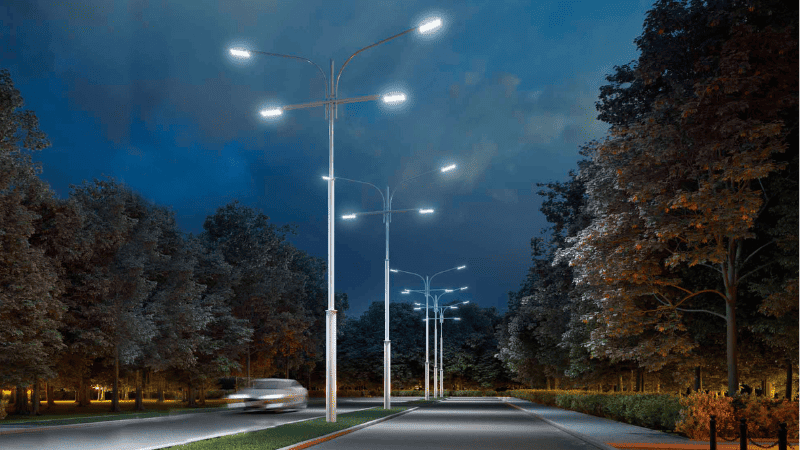
Operating Costs
The financial efficiency of LED street lights is most evident in their operational costs. On average, the cost to run an LED street light can hover around $0.12 per kilowatt-hour.
For instance, operating 40 lights at this rate for 12 hours a day translates to an hourly cost of $0.48, or $5.76 daily. This amounts to approximately $172.80 each month for a standard setup.
These figures underscore the energy and cost savings potential of LED street lighting, especially when compared to traditional lighting methods.
Ask For Free Quote
Let us Respond Promptly for your Needs :)
How Much Does Street Light Cost on a Highway or a Bridge?
For the installation of street lighting on highways or bridges, the cost scenario shifts significantly. A single street light pole’s price is around the $2,000 to $3,000 mark on average. Yet, when these installations occur in the more demanding environments of highways or bridges, expenses can rise by as much as 20%.
This increase is largely due to the greater complexity involved, such as adhering to strict safety regulations, the necessity for materials resilient against severe weather, and the logistical challenges associated with their erection and ongoing maintenance.
Why LED for Street lights
LED lights are known for their superior color rendering capabilities, which is a measure of how true to natural light the illumination appears. This attribute is crucial for night-time visibility, as it ensures that colors are represented more accurately and objects are easier to distinguish.
The enhanced color rendering of LED lights aids both drivers and pedestrians in identifying objects, road signs, and potential hazards more clearly when it’s dark. This clarity not only improves navigation but also significantly enhances traffic safety. With better visibility, the likelihood of accidents decreases, making roads safer for everyone.

Moreover, LED street lights emit a bright, directional light that can be focused where it’s needed most, reducing wastage and improving the efficiency of street lighting.
This targeted illumination ensures that the light covers the roadways effectively without unnecessary spillage into nearby homes or the night sky, contributing to a reduction in light pollution.
LEDs Paired With Solar Energy Is A Rising Trend In Street Lighting
The pairing of LED lights with solar power is evolving street lighting, offering an eco-friendly and cost-efficient solution that stands out for its sustainability and operational efficiency. LEDs bring to the table significant energy savings and longevity, dramatically cutting down electricity use and maintenance needs.
When these benefits are combined with the renewable energy sourced from solar panels, the outcome is a street lighting system that operates independently from the grid, utilizing sunlight to illuminate streets after dark.
This combination not only slashes energy bills but also significantly reduces the carbon footprint, marking a step forward in the global push for greener, more sustainable urban development.
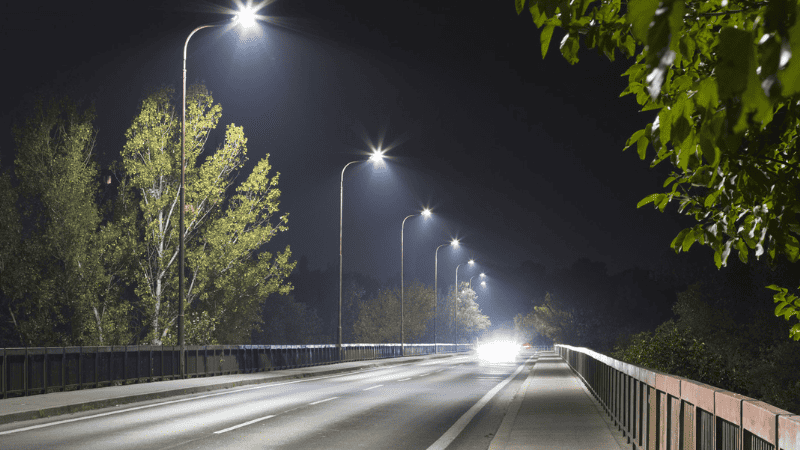
Conclusion
Embracing these technologies not only marks a commitment to environmental stewardship but also signifies a strategic move towards cost-efficient urban planning. The transition to LED street lighting and solar street lights represents a proactive step in reducing operational costs, enhancing energy efficiency, and minimizing the carbon footprint of municipal lighting systems.
Installation costs, although varying, underline the importance of initial investments in quality street light poles and reliable lighting systems.
Maintenance costs, particularly for solar LED lights and traditional street lights, are significantly influenced by the choice of technology, underscoring the cost-effectiveness of LEDs compared to metal halide street lights.
Furthermore, the adaptability of these lighting solutions, from illuminating hard-to-reach areas to replacing street lights with energy-efficient alternatives, showcases its versatility and capacity for transforming public spaces.
Illuminate the Future with RC Lighting
As we venture into an era where sustainable and efficient lighting systems are paramount, RC Lighting stands at the forefront, offering customized solutions that envision the essence of innovation and reliability in street lighting.
Our commitment to pioneering eco-friendly and cost-saving lighting solutions is commendable, and we invite you to join us in this journey towards a brighter, more sustainable future.
Discover RC Lighting: Dive deeper into our work ethics and our dedication to pushing the boundaries of lighting technology. Contact us now!



